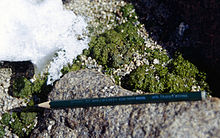
Prasiola is a genus of fresh water and marine green algae. Each individual plant is small but they usually grow side by side to form a green turf on rock surfaces. The genus has a cosmopolitan distribution.

Palmaria palmata, also called dulse, dillisk or dilsk, red dulse, sea lettuce flakes, or creathnach, is a red alga (Rhodophyta) previously referred to as Rhodymenia palmata. It grows on the northern coasts of the Atlantic and Pacific Oceans. It is a well-known snack food. In Iceland, where it is known as söl, it has been an important source of dietary fiber throughout the centuries.

Alaria esculenta is an edible seaweed, also known as dabberlocks or badderlocks, or winged kelp, and occasionally as Atlantic Wakame. It is a traditional food along the coasts of the far north Atlantic Ocean. It may be eaten fresh or cooked in Greenland, Iceland, Scotland and Ireland. It is the only one of twelve species of Alaria to occur in both Ireland and in Great Britain.

Ceramium is a genus of Ceramium algae. It is a large genus with at least 15 species in the British Isles.
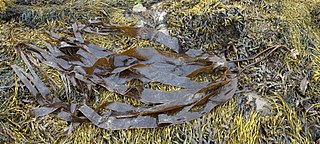
Laminaria digitata is a large brown alga in the family Laminariaceae, also known by the common name oarweed. It is found in the sublittoral zone of the northern Atlantic Ocean.
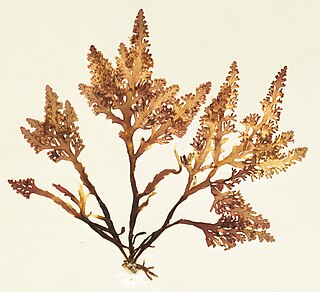
Osmundea pinnatifida is a species of red alga known by the common name pepper dulse.

Polysiphonia lanosa is a common species of the red algae (Rhodophyta) often to be found growing on Ascophyllum nodosum.
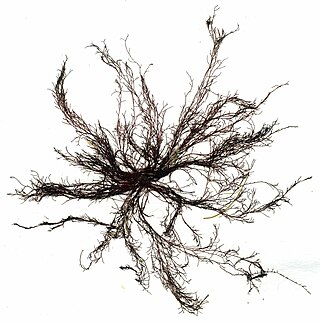
Polysiphonia stricta is a small red marine alga in the Division Rhodophyta.
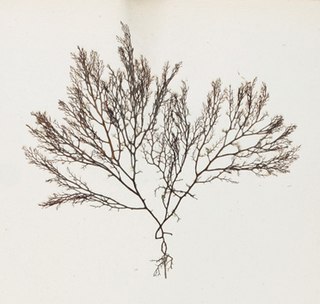
Vertebrata fruticulosa(Boergeseniella fruticulosa Kylin) is a small marine alga in the Division Rhodophyta.

Ceramium shuttleworthianum is a small marine red alga.
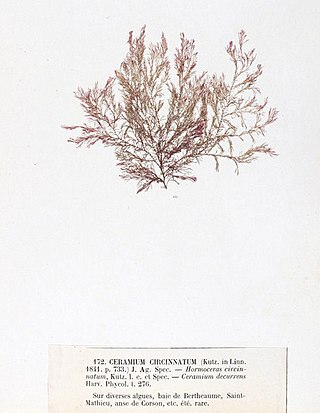
Ceramium circinatum is a small marine red algae.

Ceramium virgatum, or the red hornweed, is a small red marine alga.
Brongniartella byssoides Schmitz is a small red marine alga.

Membranoptera alata is a small red alga in the Rhodophyta.

Phyllophora crispa is a medium-sized fleshy, marine red alga. This alga forms dense mats of up to 15 cm thickness, which influence environmental factors, thus creating habitat for several associated organisms.
Phyllophora pseudoceranoides, the stalked leaf bearer, is a small marine red alga.
Prasiola furfuracea is a small green alga that grows terrestrially.
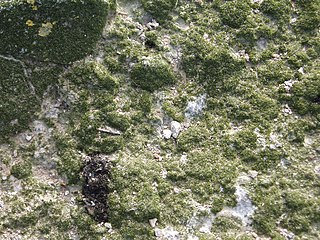
Prasiola stipitata is a small green alga.
Cladostephus hirsutus is a marine brown alga.

Prasiola calophylla is a species of algae.
